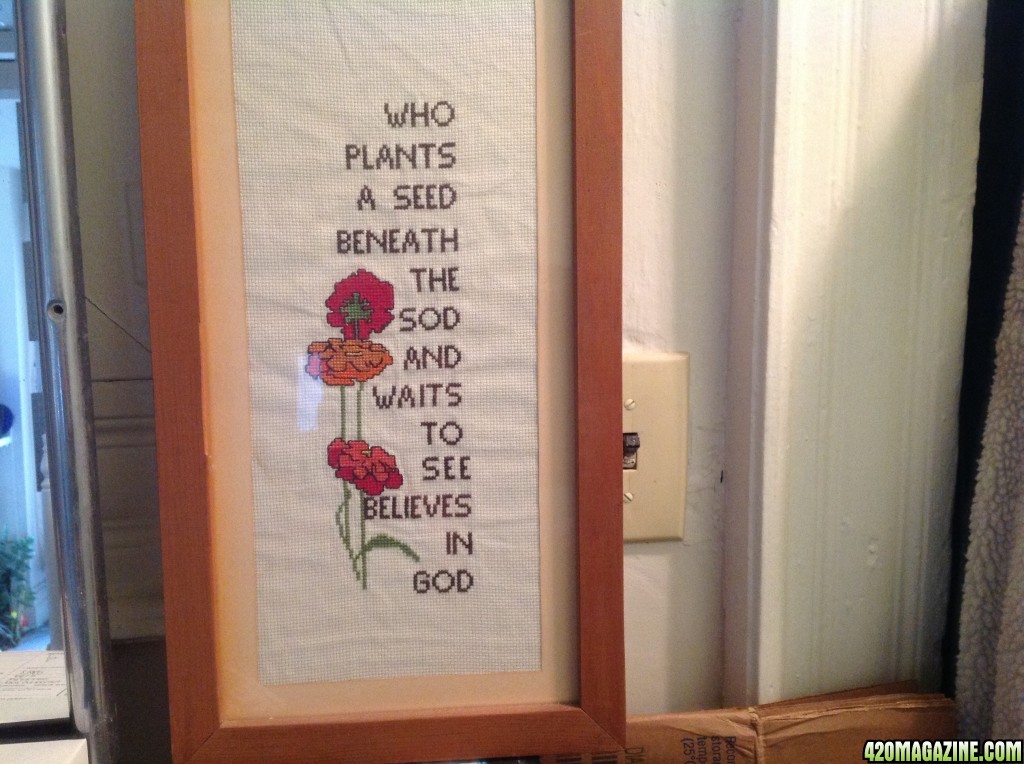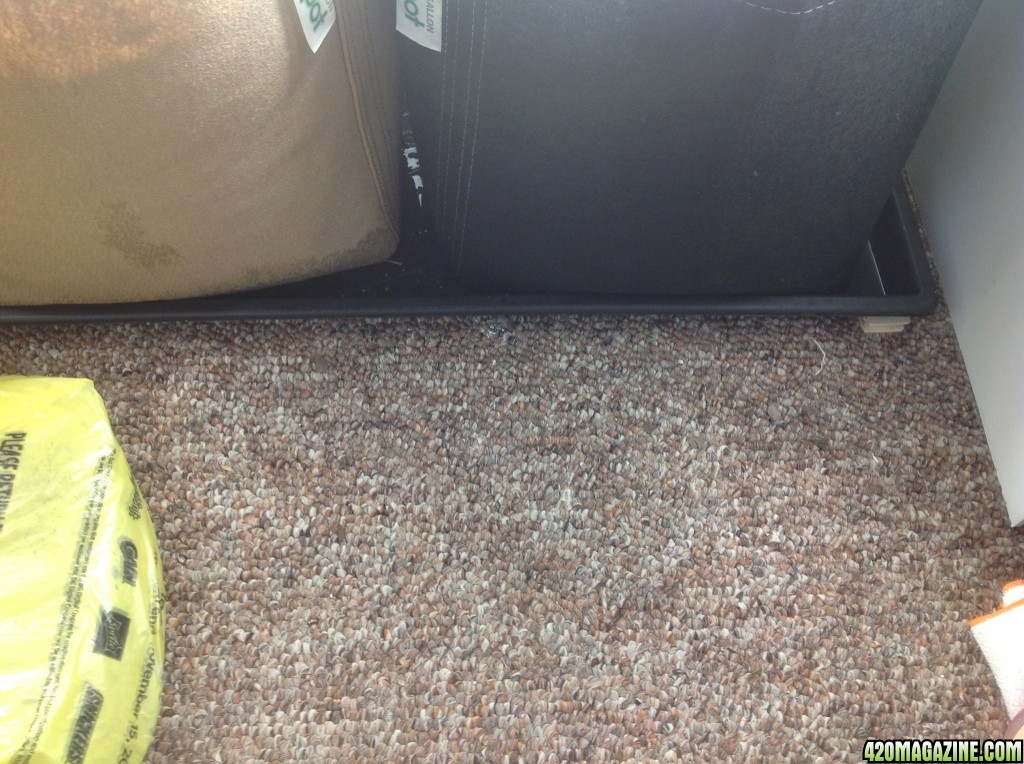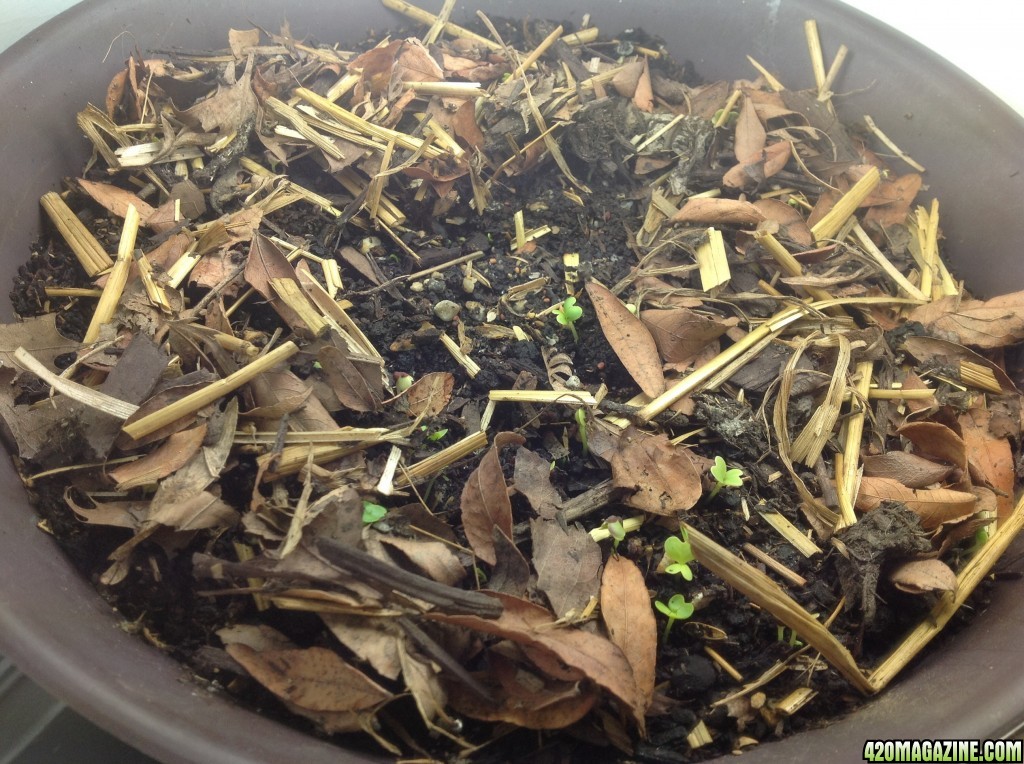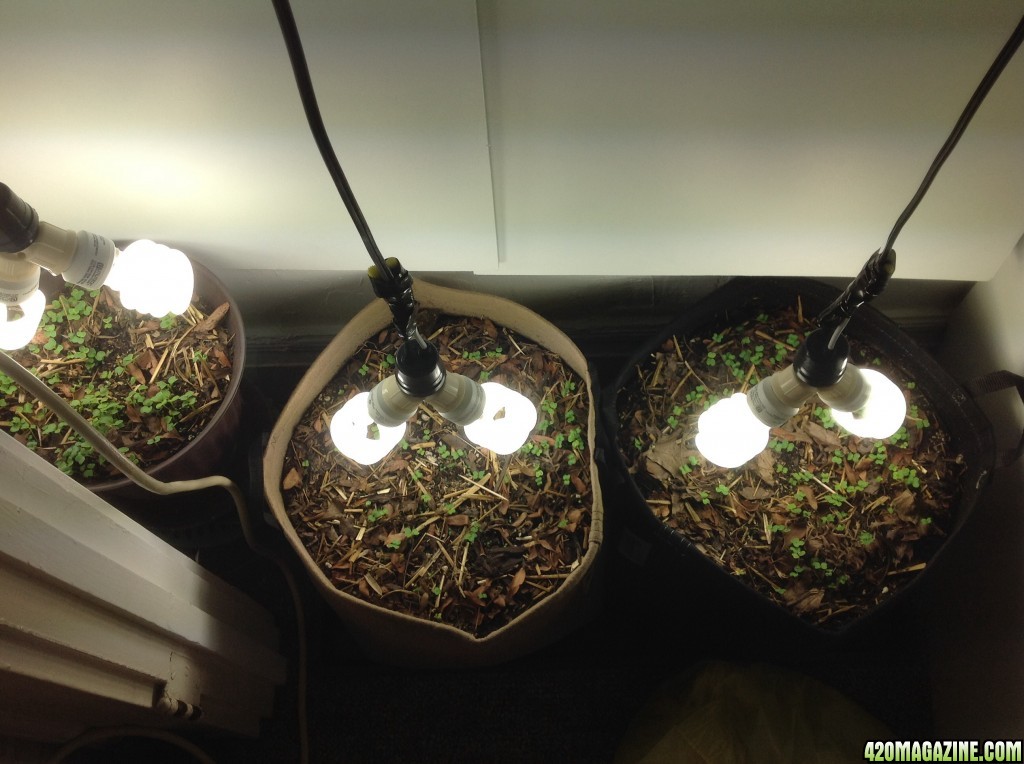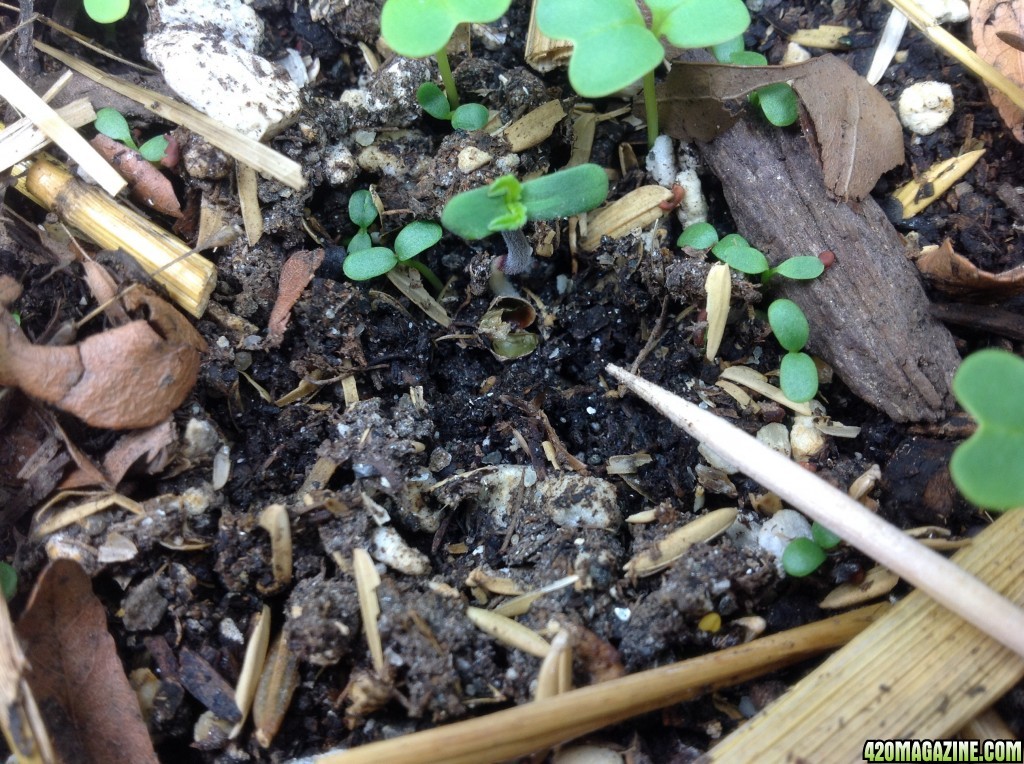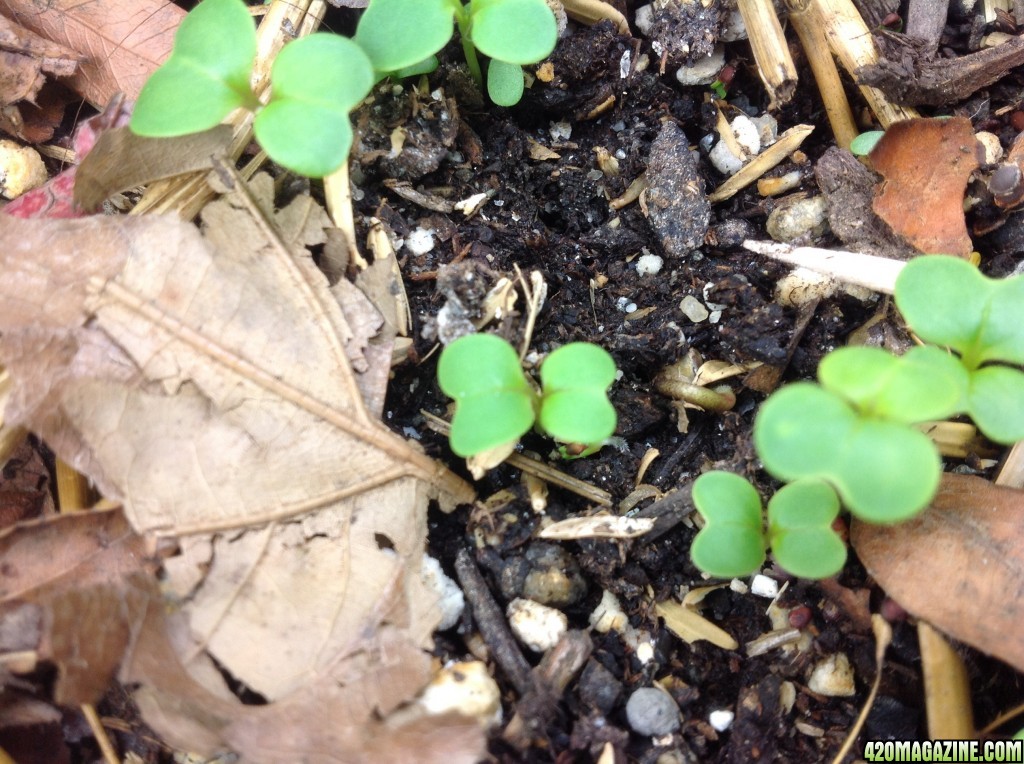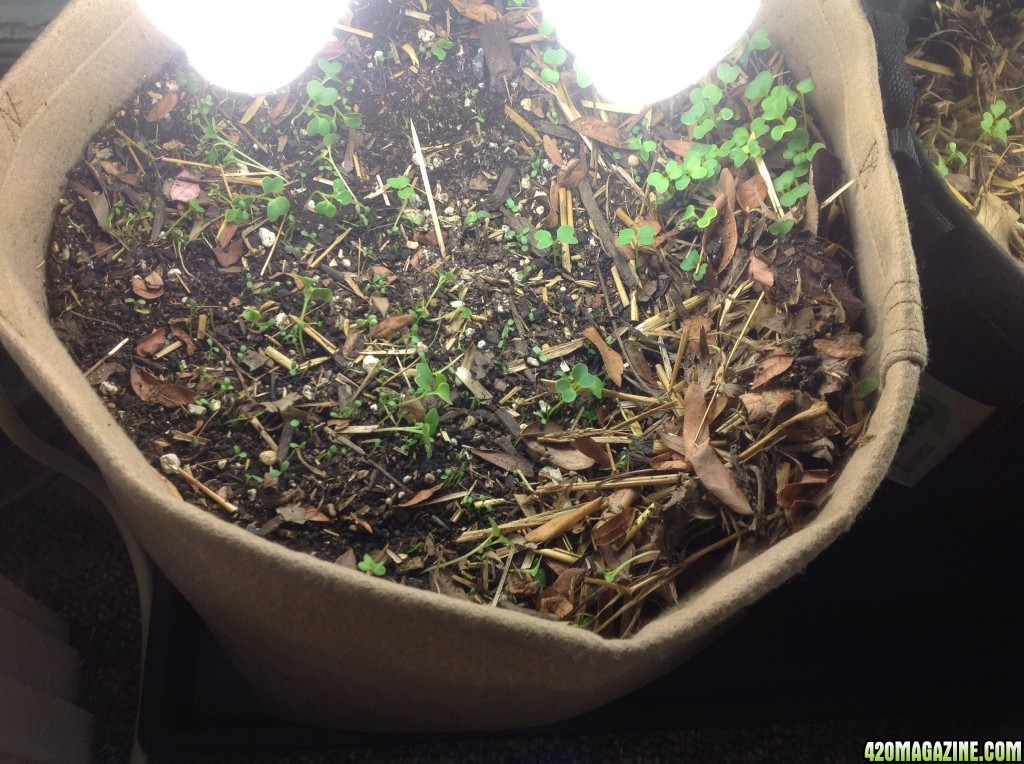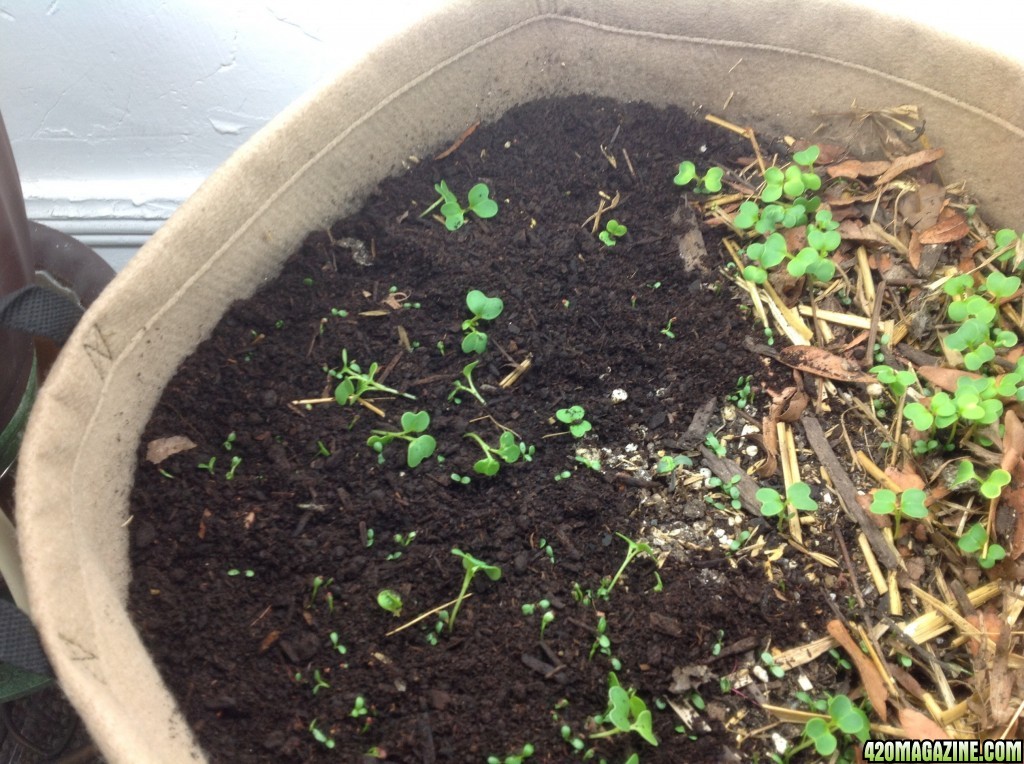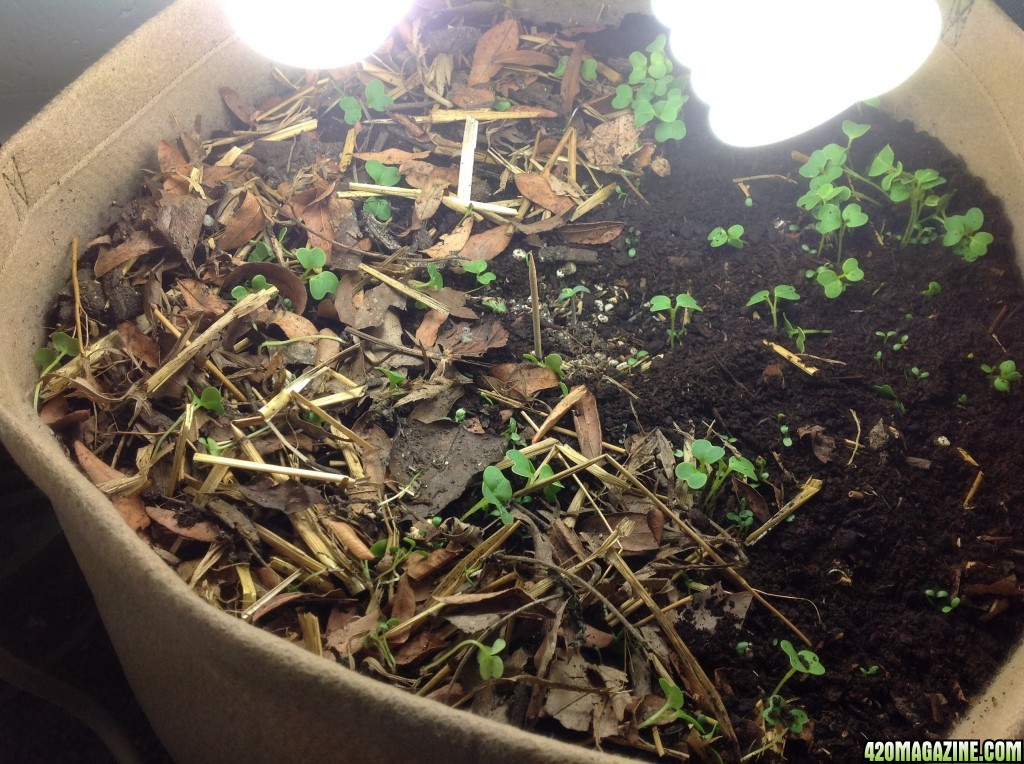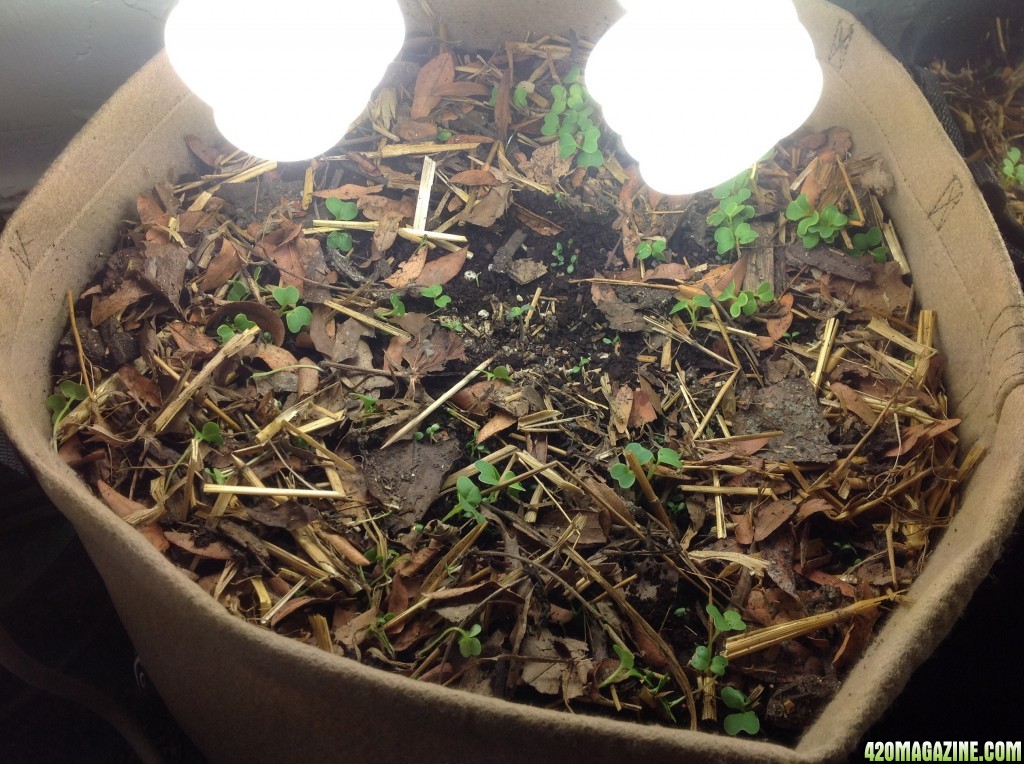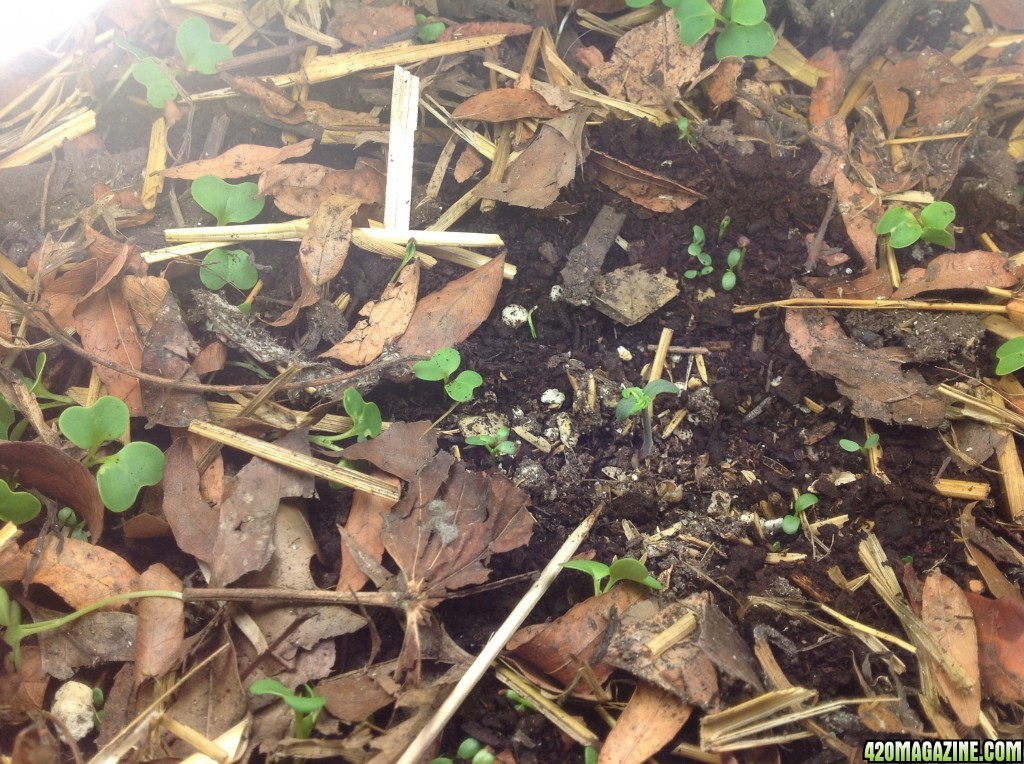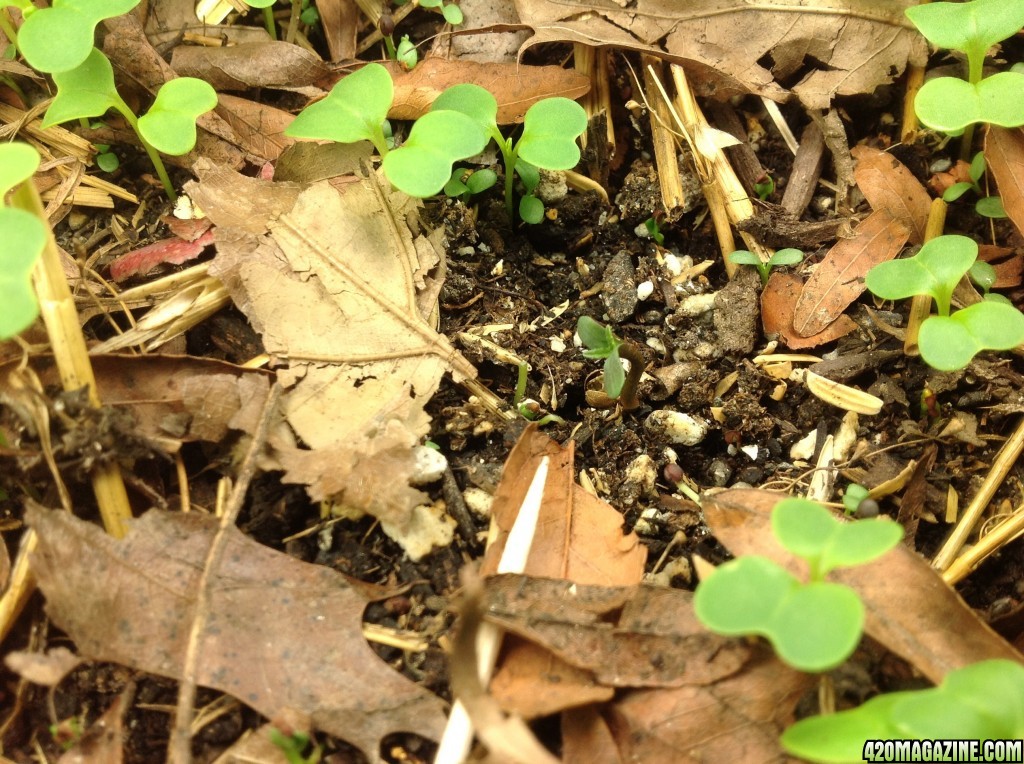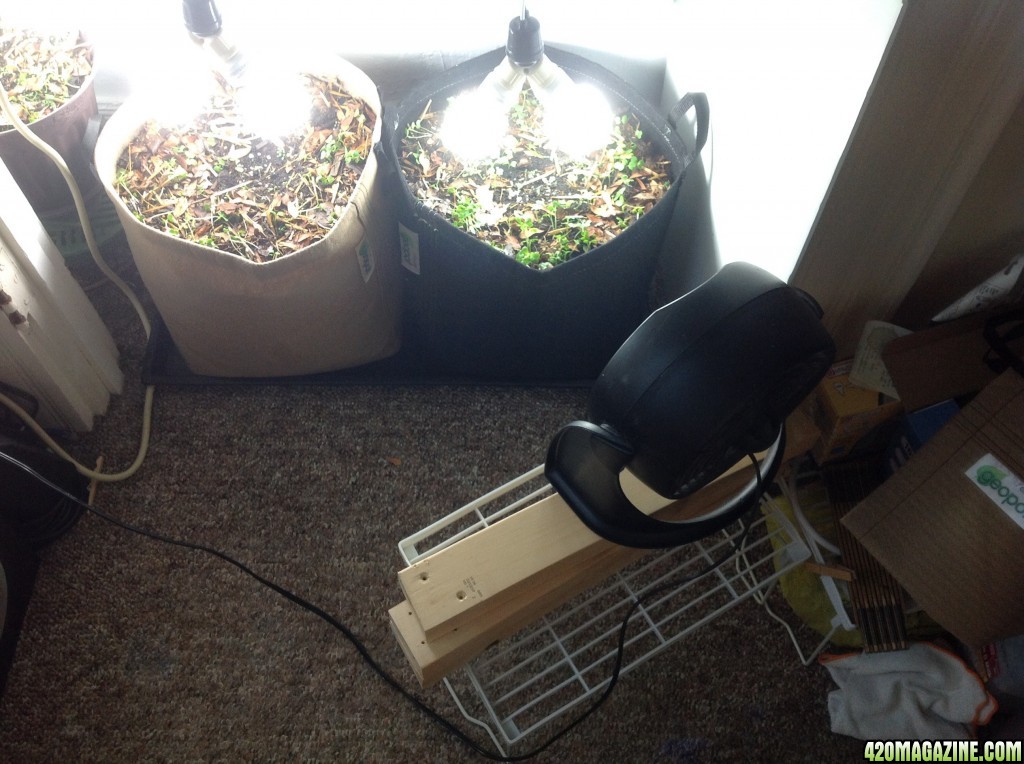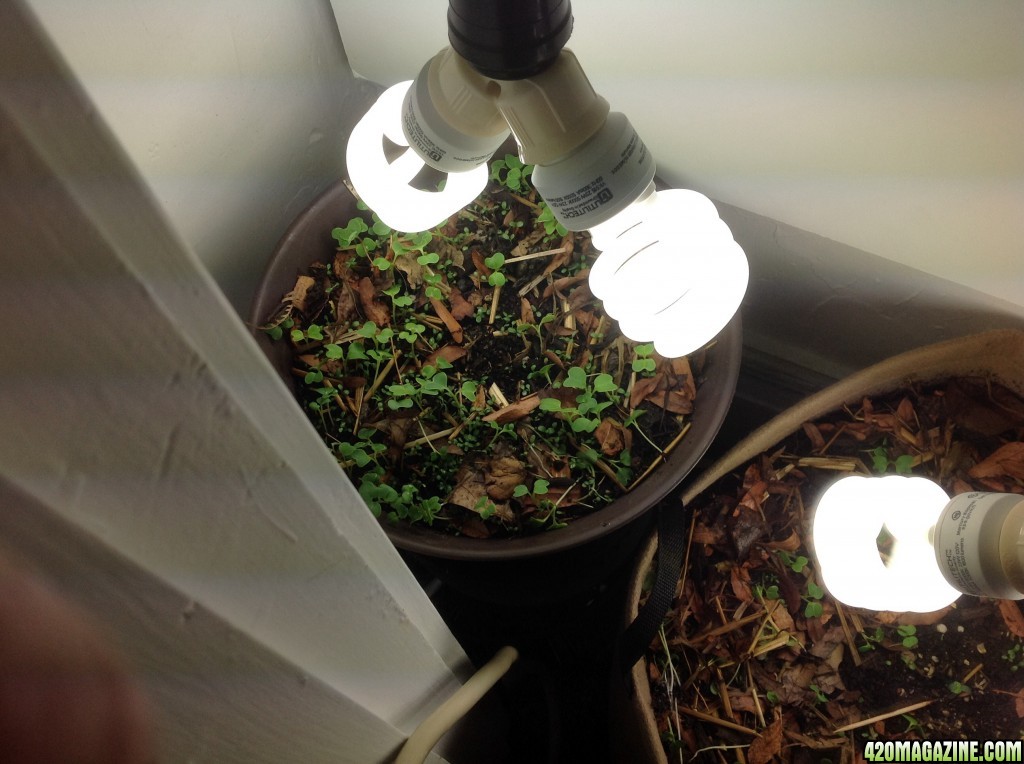- Thread starter
- #121
This is my dream watering schedule.
Water seedlings with coconut water or rainwater only.
The watering schedule is done consistently, regardless of where the plant is in its life cycle.
Two to three waterings a week (basically every other day)
- one enzyme tea watering (measurements for one gallon)
* 1 TBS sprouts, puréed
* 10 ml Fulpower fulvic acid
* 5 ml Agsil
- one rainwater watering
- one coconut/aloe watering
* 1/4 c fresh, young coconut water
* 1/4 tsp 200x aloe vera powder
* 5 ml Agsil
Repeat indefinitely.
Every three weeks add 1/4 tsp TM7 to 2-1/2 gallons water.
Beginning when there are four nodes, add bio accumulator teas.
With new soil do weekly application of two alternating teas
- 2-3 tsp neem meal + 1-2 tsp kelp bubbled in a half gal water for 24 hrs.
* dilute to make 2.5 gal water
* add 1/4 tsp aloe + 10 ml fulpower per gallon
- same measurements using alfalfa instead of neem
The estimated minimal cost of beginning this regime:
- $ 15 Malted barley (2.5 pounds; 4 oz/cup)
- $ 22 Coconut Water Powder (1/2 # = 75 gal @ 1/4 c. per gal.)
- $ 22 200x aloe powder
- $ 26 Fulpower (quart)
- $ 14.20 Agsil (pound)
- $ 13 TM7 (100 gm bag)
- $ 13 Neem/karanja (2.5 # = 5-6 cups)
- $ 14.06 Kelp meal (3# = 6 cups)
You see why this is a dream scenario. I will be picking items up bit by bit, but until then I will be using as many plant-based amendments as possible to fill the voids.
Notes on the list:
- Priority should be given to coconut, aloe and malted barley
- Secondary priority to fulpower, TM7 and Agsil
- Third would be kelp, neem/karanja meal
- Sprouted corn can be substituted for coconut water to supply cytokinins
Things I still haven't figured out:
Can purchased aloe gel be used to create aloe water? Any ideas on this?
Is it possible to substitute corn meal, molasses, kelp, equisetum, or camomile for plant immunity in place of neem/karanja? Camomile in particular is legendary for its immunity properties.
I didn't make it crystal clear that the coconut/aloe watering measurements were also for a gallon of rainwater. Most of you realize that because of your experience. This clarification was for those I may have confused.
I also wanted to point out that a no-till is watered more frequently than most cannabis growers are familiar with. The "lift the pot" mentality doesn't apply here. The micro community you are cultivating in a no-till can never go dry, or the micro beasties that are growing your plant for you will die. You need to learn to read the soil, the plant, the pot itself (if using fabrics - and you should be using fabrics if you have the option) to determine the moisture balance. These soils hold water in a way that reminds me of the forest floor.
I learned after the initial watering that it didn't need that whole 2 1/2 gallons between the three. The Buddha and the Bomb dropped almost a half gallon back into the tray. It reminded me to buy a turkey baster to easily pull out excess run off. I had to use an eye dropper to keep it from overflowing onto the floor. That was an interesting experience. I almost missed it, just catching it at the rim of the shoe tray after glancing over as I went by. It would have been a terrible mess to have all that tannin-filled water run into the carpet.



